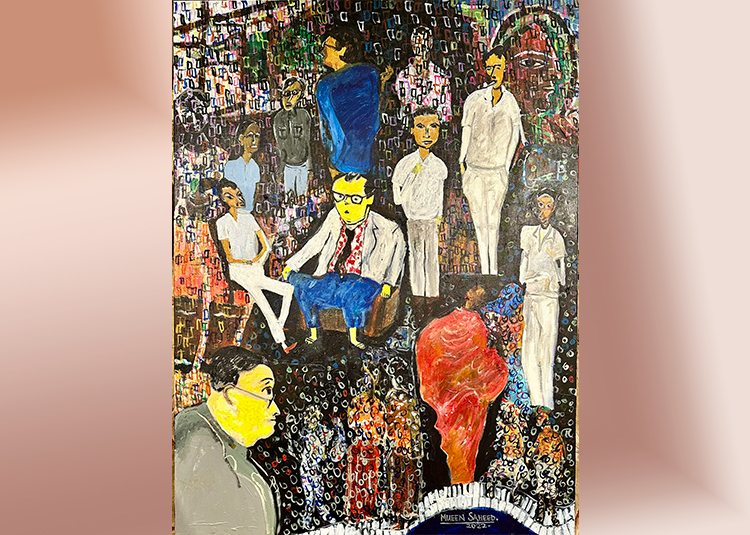Aubrey Collette’s Painting of the ’43 Group with Lionel Wendt seated right and Harry Pieris far left. Standing figures are (left to right) Geoff Beling, George Claessen, Richard Gabriel, George Keyt, Ivan Peries, George Manjusri, Aubrey Collette and Justin Deraniyagala In the early 20th century, amidst the declining years of the Empire, a new artistic movement emerged that celebrated the beauty and culture of the island Ceylon, through art, music, poetry, and photography. Ironically, it was the Orientalist interests that first opened the floodgates to archaeological wonders and translations of historical texts like the Mahavansa, sparking nationalist sentiments and political ideologies that would define the century.
The renaissance that followed witnessed a revival of art, the restoration of archaeological sites, image houses, monasteries, and temples, particularly in Kandy and the Southern provinces. By the early 1940s, artists such as George Keyt and Beling, influenced by European traditions, and Justin Deraniyagala, who had studied at London's Slade School of Art, were exhibiting alongside renowned figures like Matisse and Sutherland. Harry Pieris, educated at the Royal College of Art and in Santinekatan under Rabindranath Tagore, fused contemporary European styles with millennia-old Sri Lankan art traditions.

Lionel Wendt, trained in law and music in London and Berlin respectively, established himself as a pioneering photographer with a exhibition at the Photographic .
















